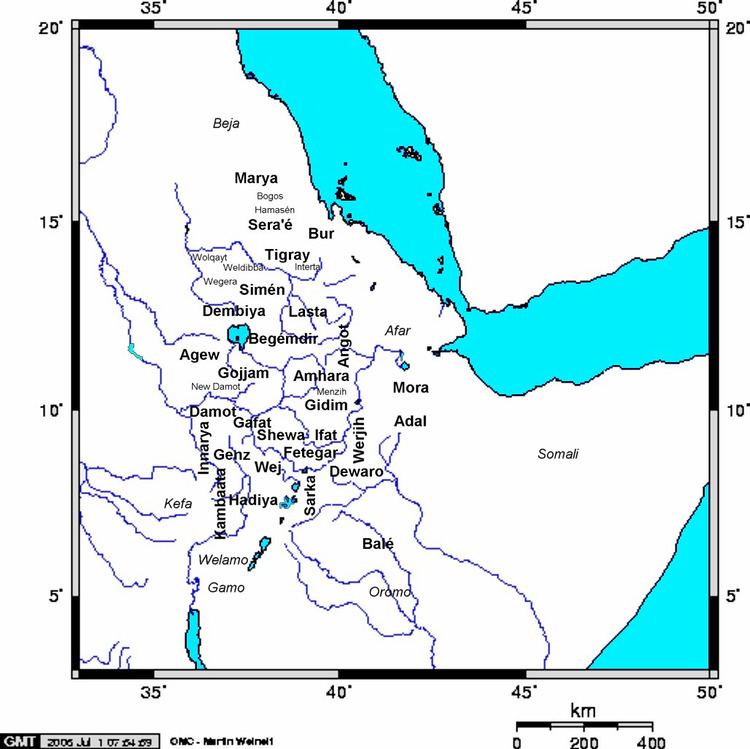 | ||
The Sultanate of Showa (Sultanate of Shewa) was a Muslim kingdom of uncertain historical origins situated in the territory of present-day Ethiopia. It was situated between the Ethiopian Highlands and the Awash River valley, approximately 70 km northeast of Addis Ababa in the vicinity of the town of Walale. Its location was in northern Hararghe.
It was one of the oldest documented Muslim state in the region whose dynastic family, the Makhzumis, are said to have reigned in Shewa from AH 283/AD 896 for three hundred and ninety years to 1285-86. They ruled until they were deposed by Walasma dynasity of Yifat or Ifat (1285-1415). Ifat was once the easternmost district of Shewa Sultanate. In 1285 Ali b. Wali Asma deposed the kings of Shewa and installed a certain Mhz.
There were nine recorded Sulṭāns of Showa (Shewa), who asserted descent from Wudd ibn Hisham al-Makhzumi. The Showa chronicle records two other names before Sulṭān Malasmaʿī (r. 1180–1183). However, it is not clear what is their relationship with the Makhzumi dynasty.
Shewa Sultanate, established in 896, is the first Muslim state inland and according to the chronicle of the sultanate no major report of conversion to Islam was reported before the begning of 12th centuary. However, beginning with the conversion of the Gbbh people in 1108, whom Trimingham suggested them being the ancestors of Argobbas, other people were converted. By mid fourteenth centuary Islam expanded in the region and the inhabitants leaving north of Awash river were the muslim people of Zaber and Midra Zega (located south of modern Merhabete); the Gabal (or Warjeh people today called Tigri Worji); and Tegulat & Menz people whom at that time were Muslims. The chronicle of Shewa sultanate also mentions that in 1128 the Amhara fled from the land of Werjih people whom at that time were pastoralist people and occupied the Awash valley east of Shoan plateau.
Ifat or Yifat, established in early medieval times, was the easternmost district of Shewa Sultanate and was located in the strategic position between the central highlands and the Sea, especially the port of Zeila. In 1285 Ifat's ruler Wali Asma deposed Shewan kings and established the Walasma dynasity and Shewa with its districts including its centers, Walalah and Tegulat, became one of the seven districts of Ifat sultanate. Tegulat, previously the capital of Shewa Sultanate, is situated on a mountain 24 km north of Debre Berhan, located in todays North Shewa Zone (Amhara), and was known by muslims as mar'ade which later became the seat of emperor Amda Tsion. The chronicle of Amde Sion mentions Khat being widely consumed by muslims in the city of Marade.
Based on Cerulli's study of the names of the princes J. D. Fage and Roland Oliver were convinced that the inhabitants of Shewa spoke Ethiopian semitic language likely Argobba language. After Shewa was incorporated into Ifat an Egyptian courtier, Al Umari, would describe Ifat Sultanate as one of the largest as well as the richest of Ethiopias muslim provinces, and Shewa, Adal, Jamma, Lao and Shimi are places incorporated into Ifat.
